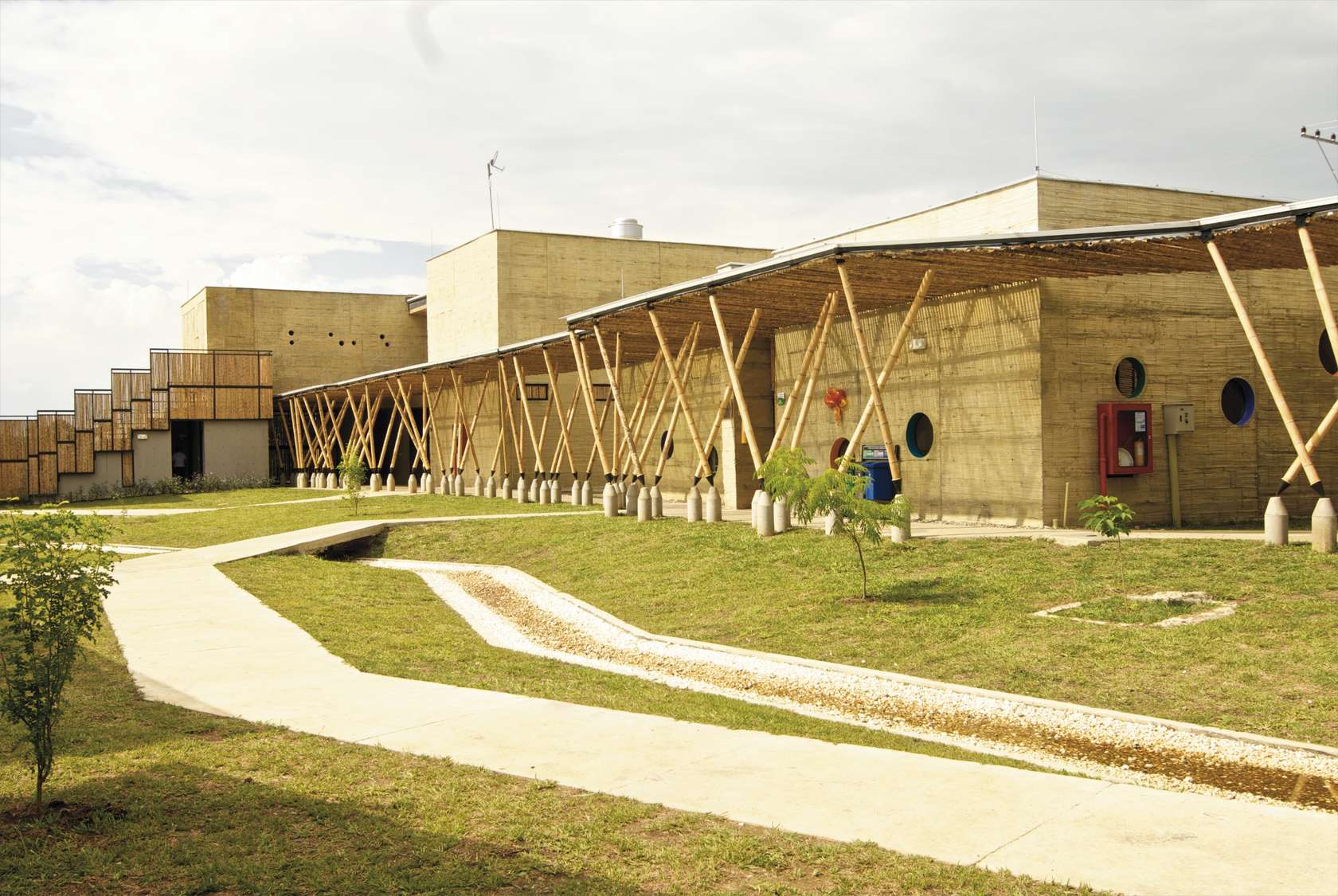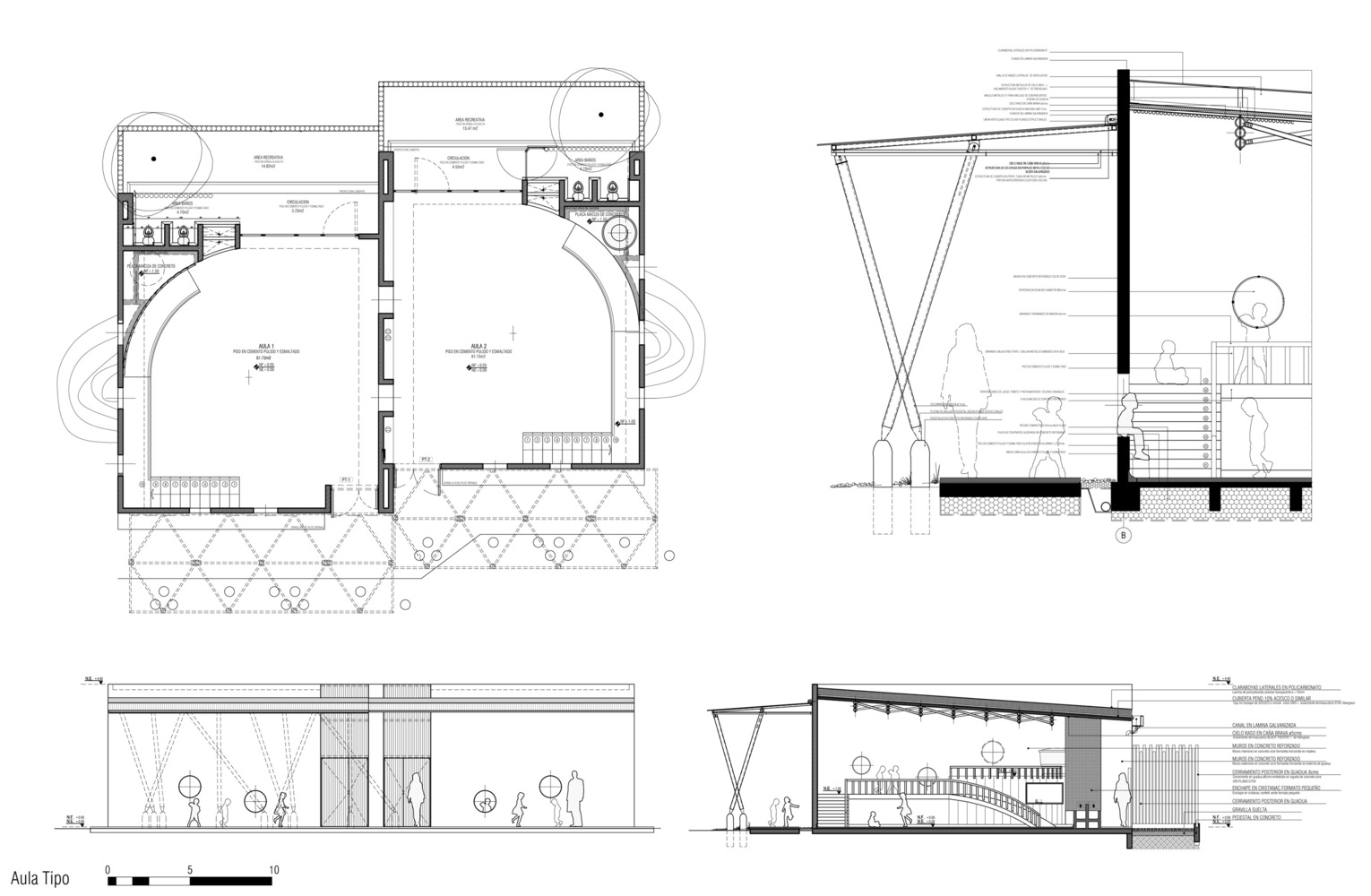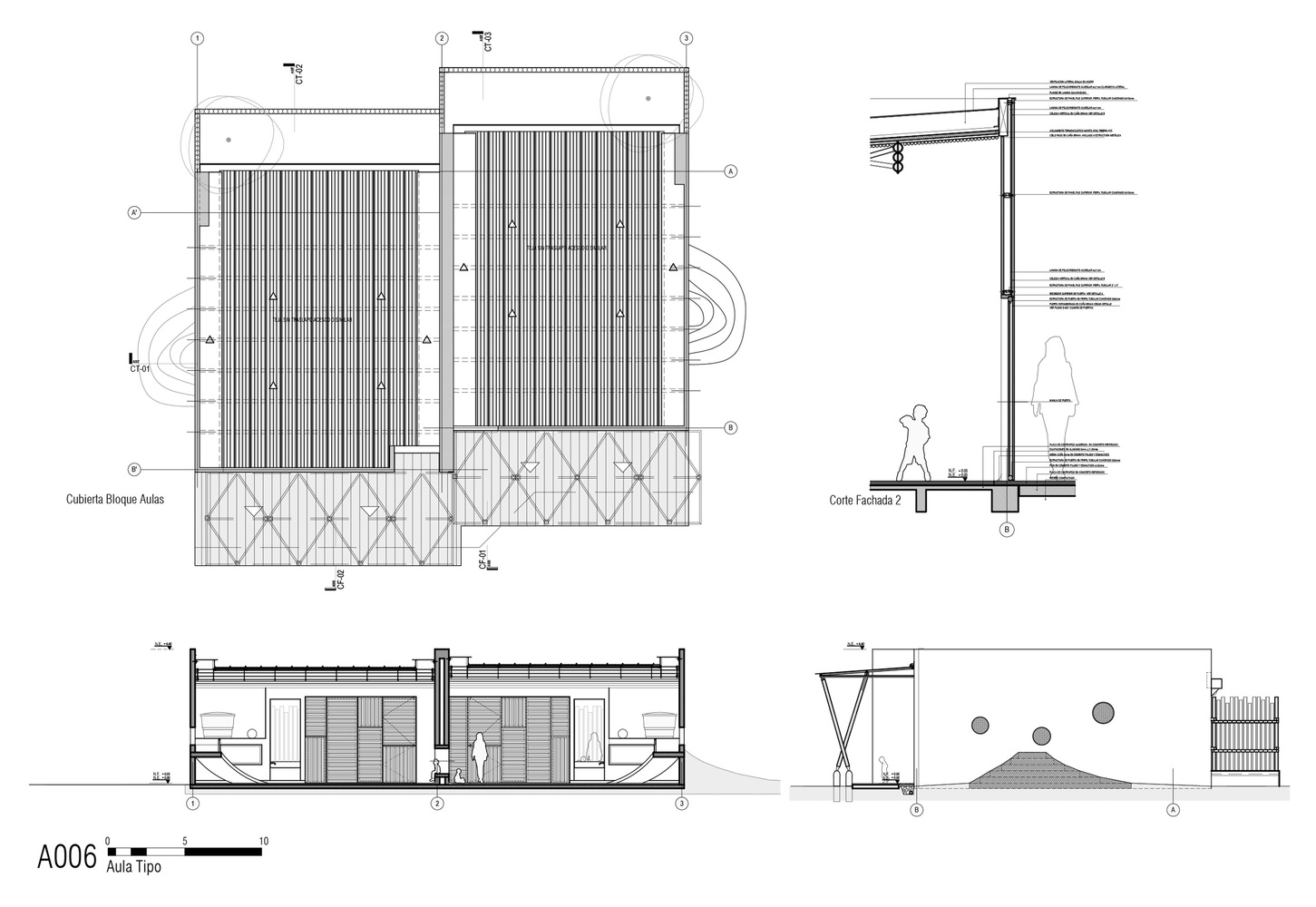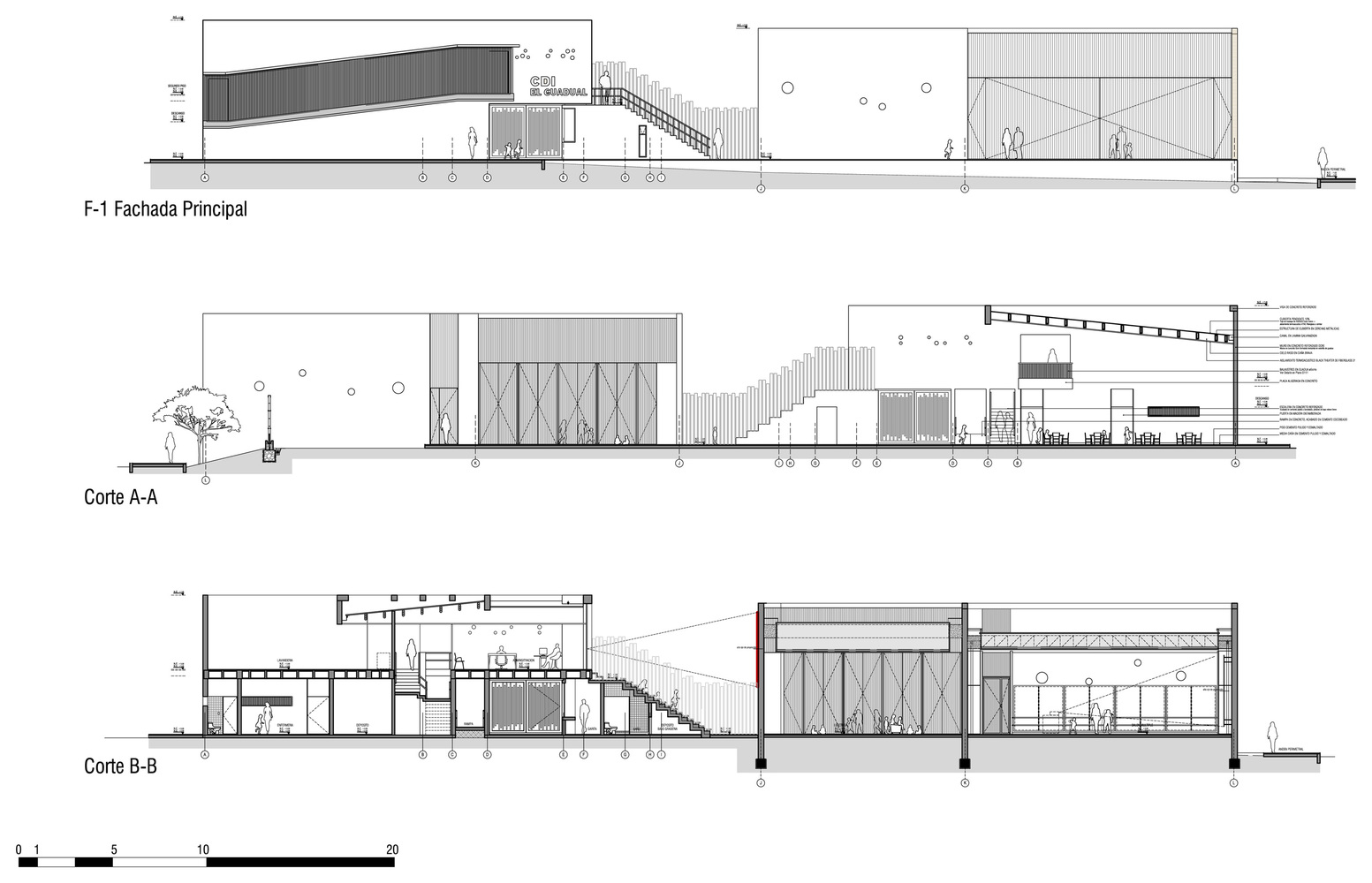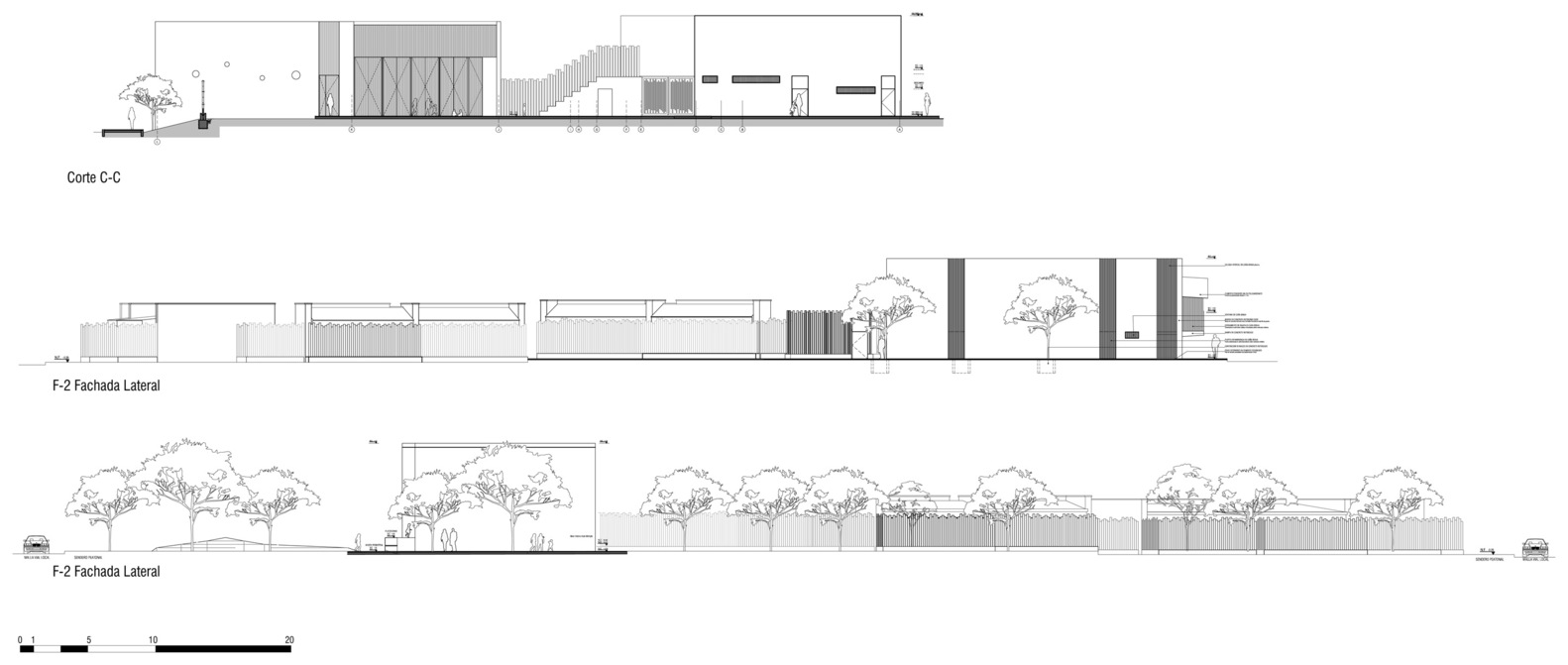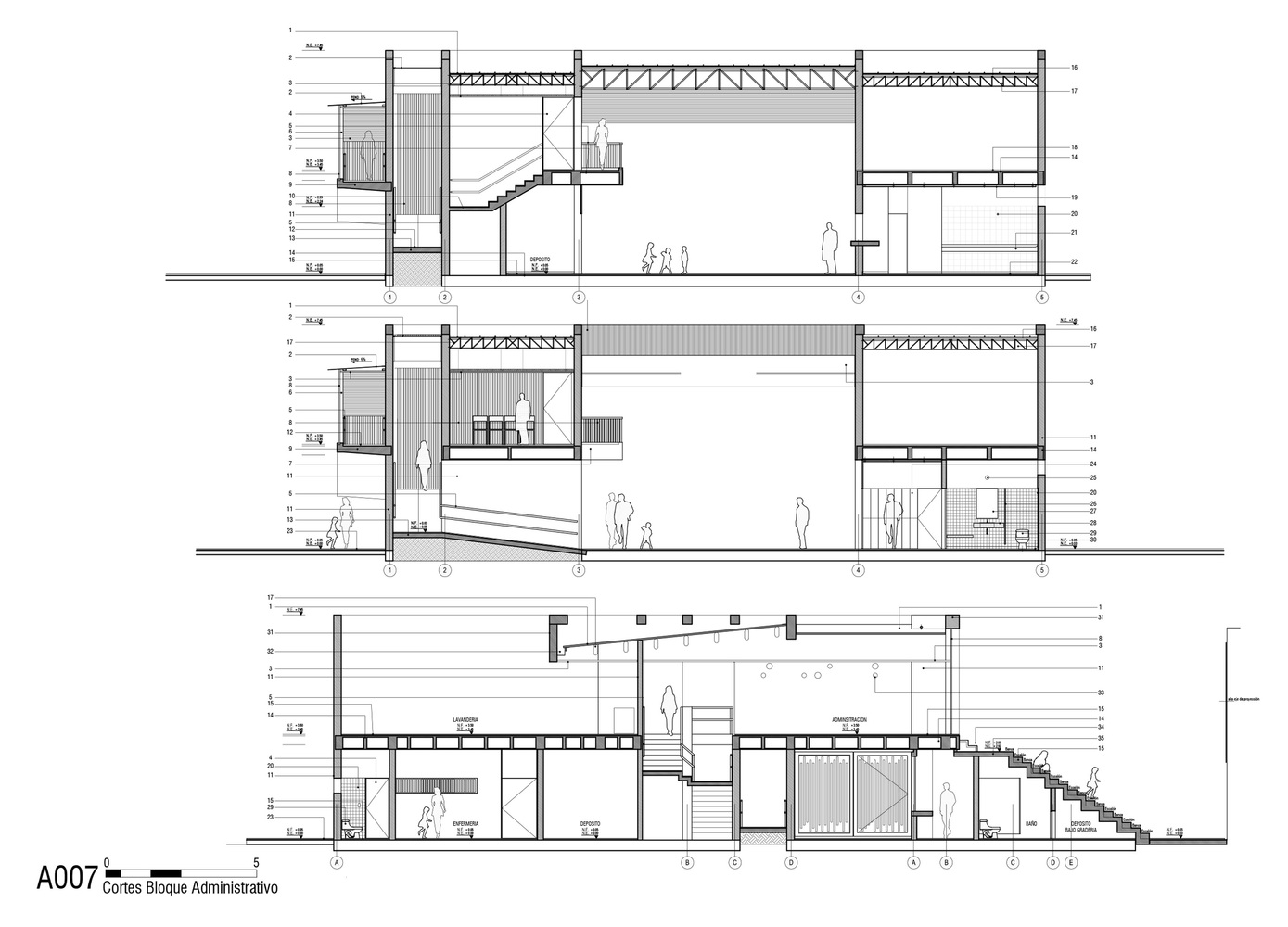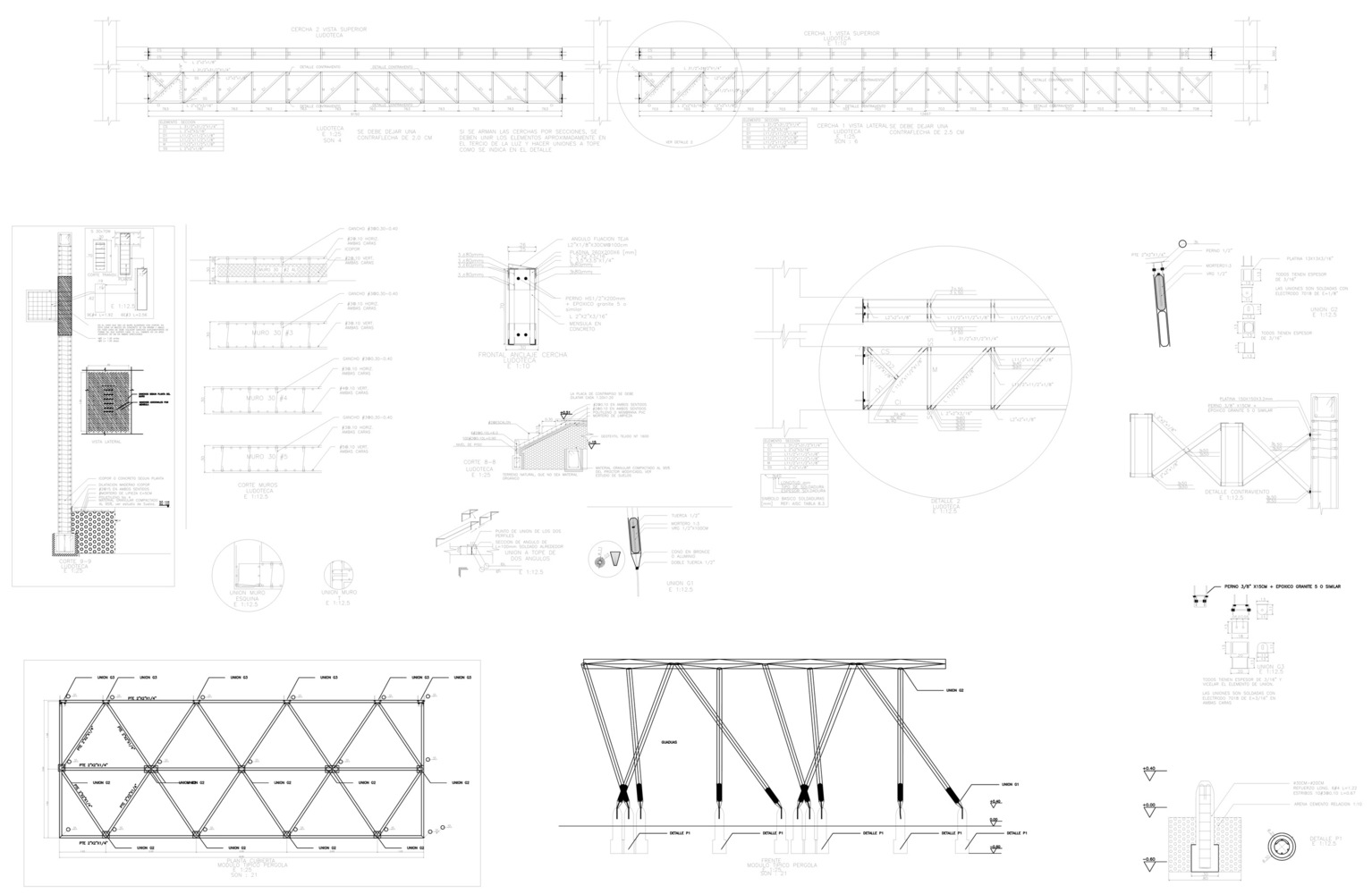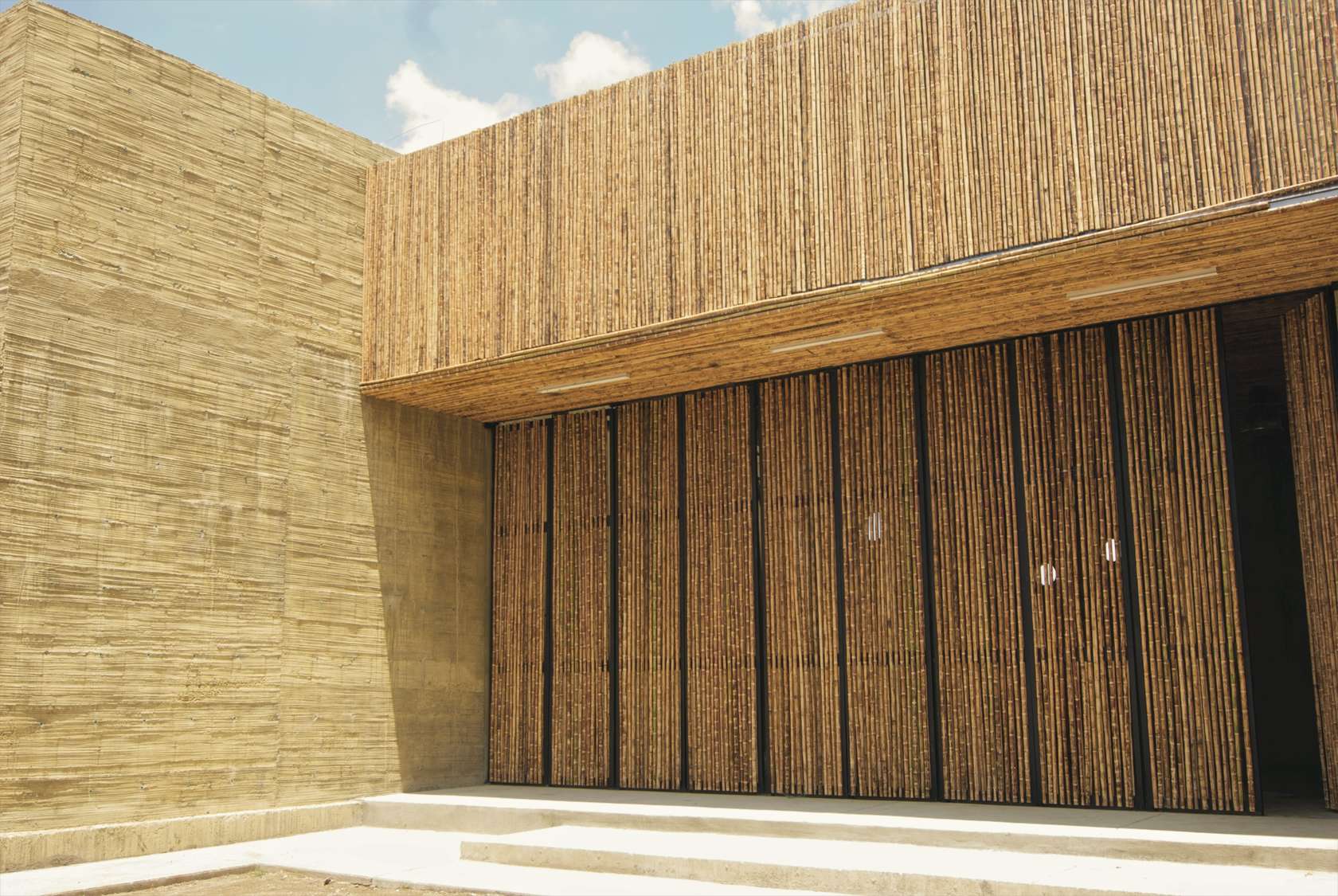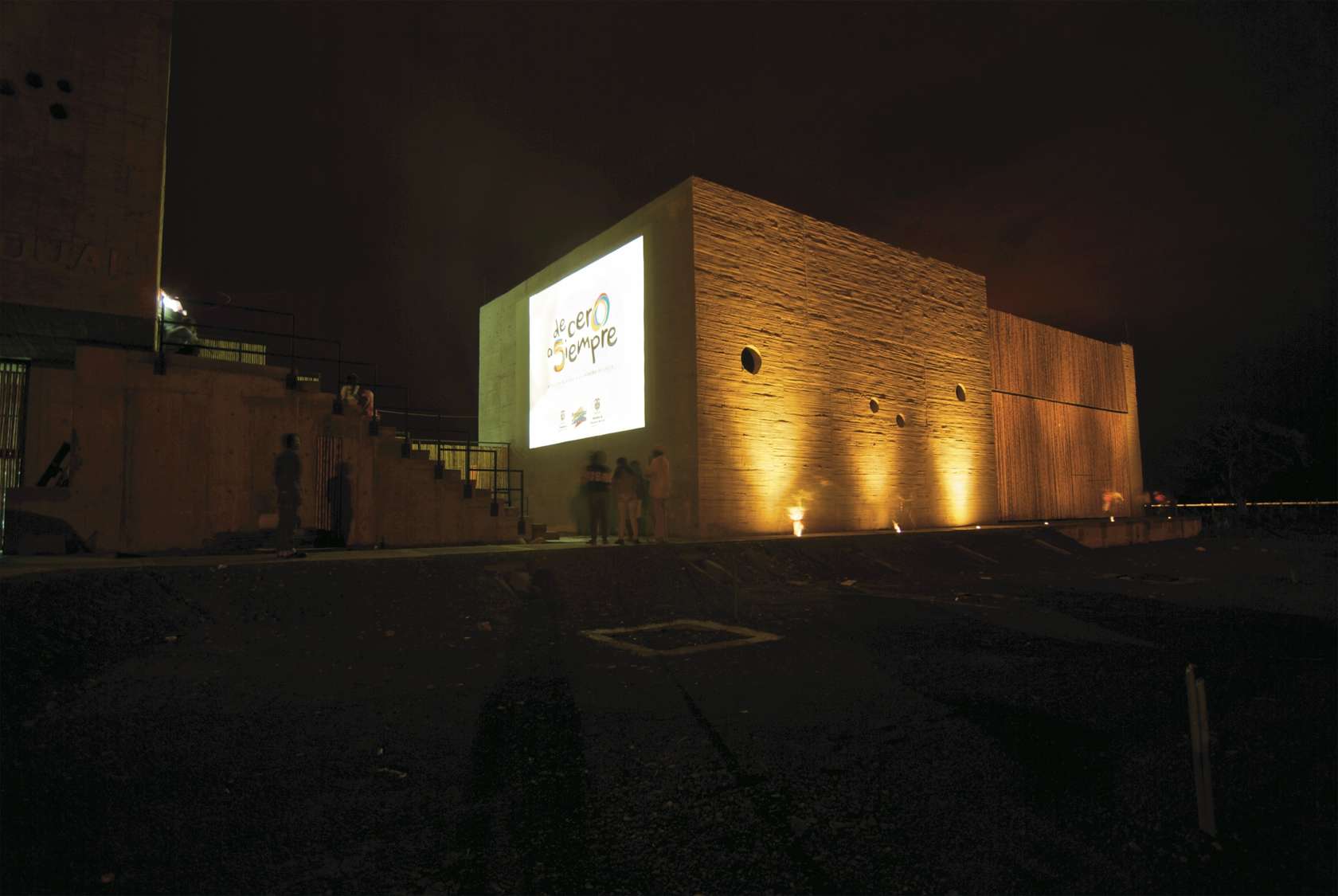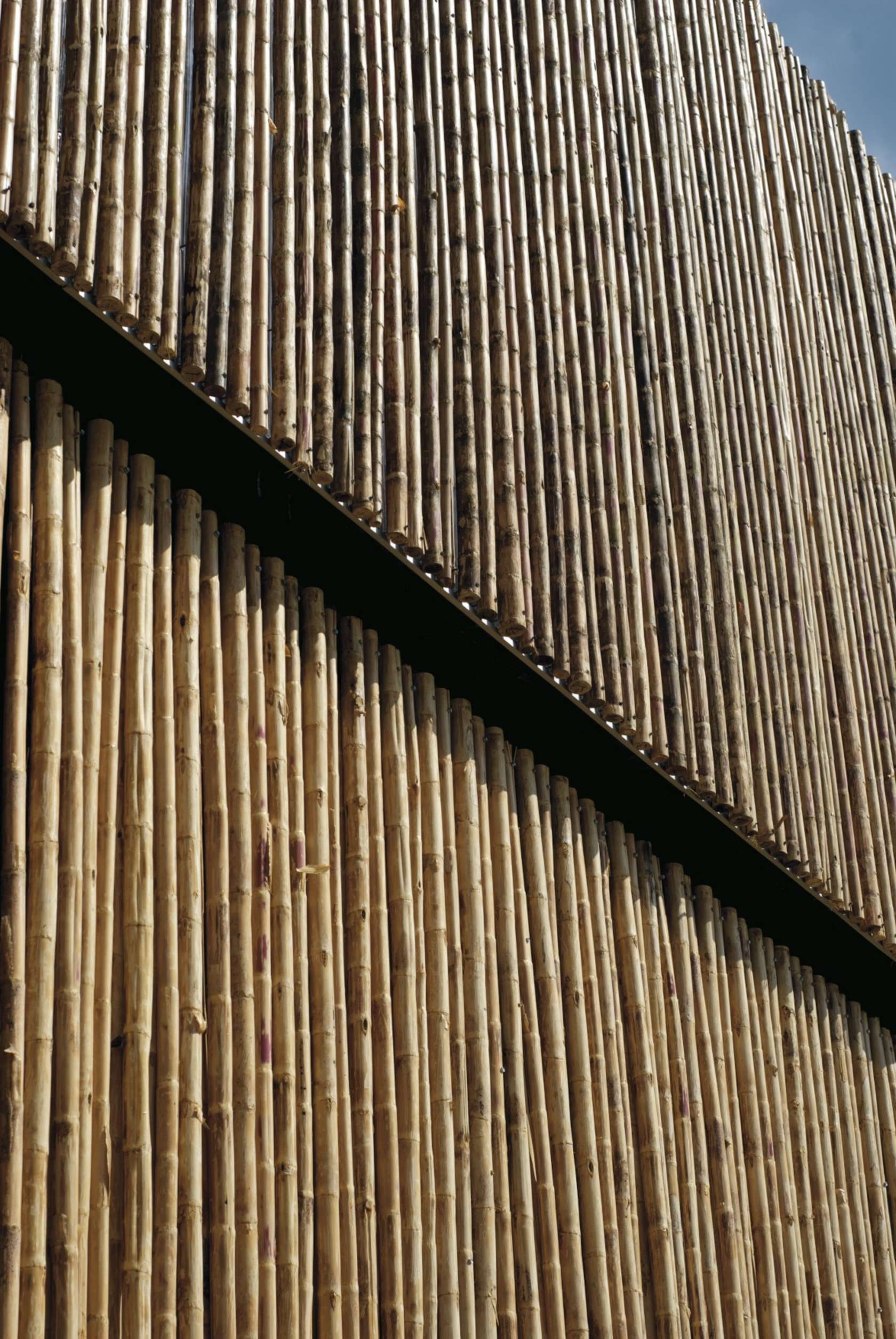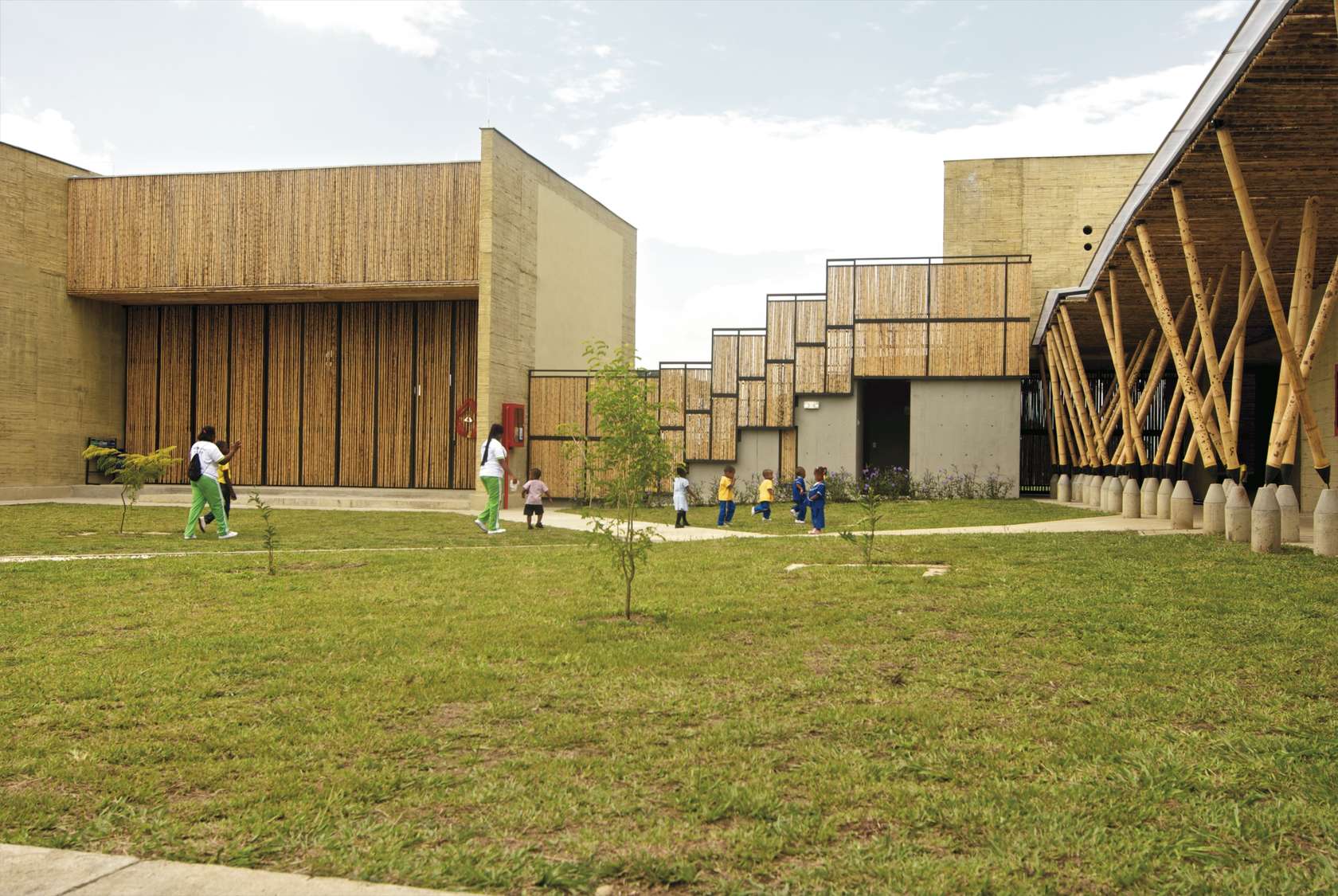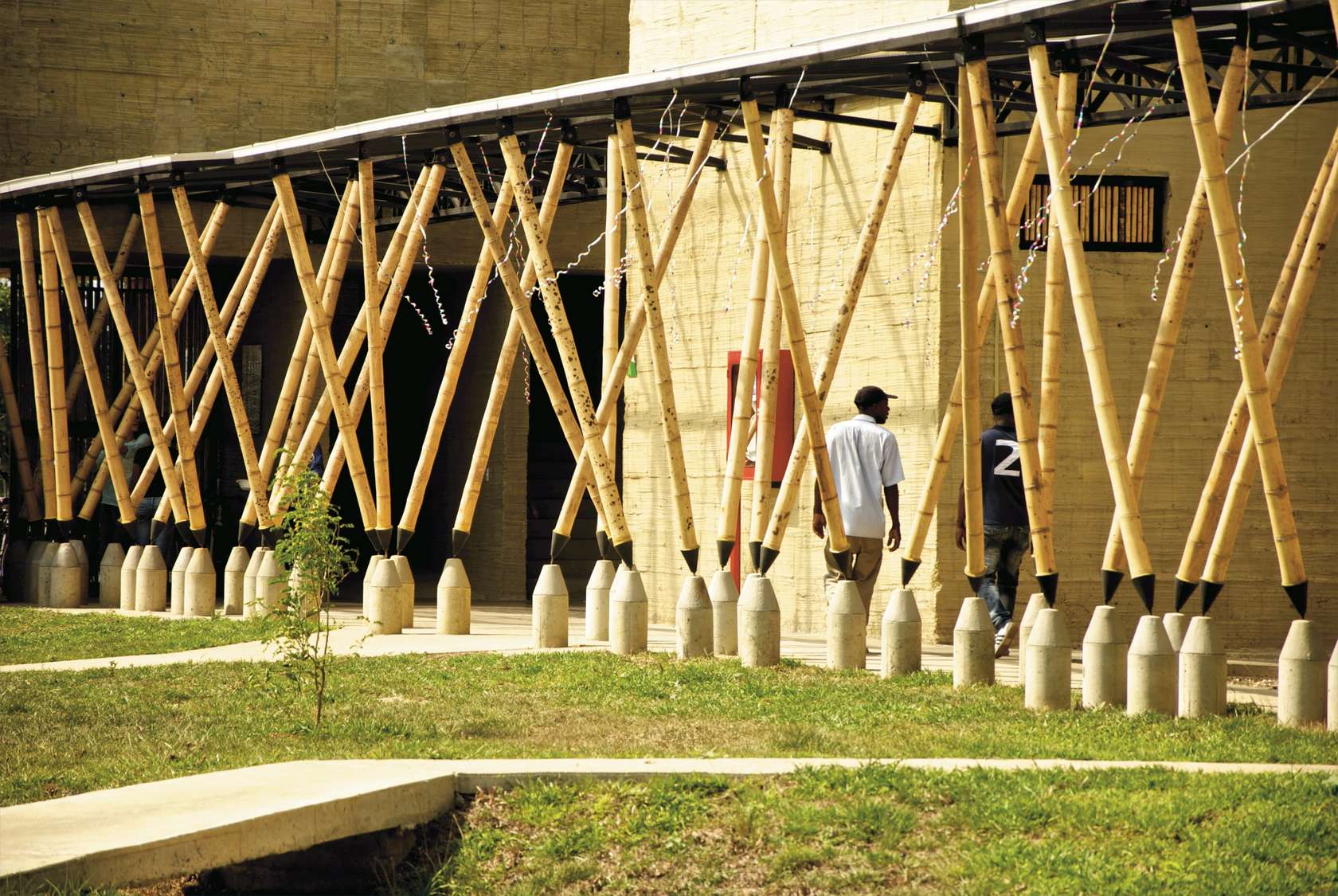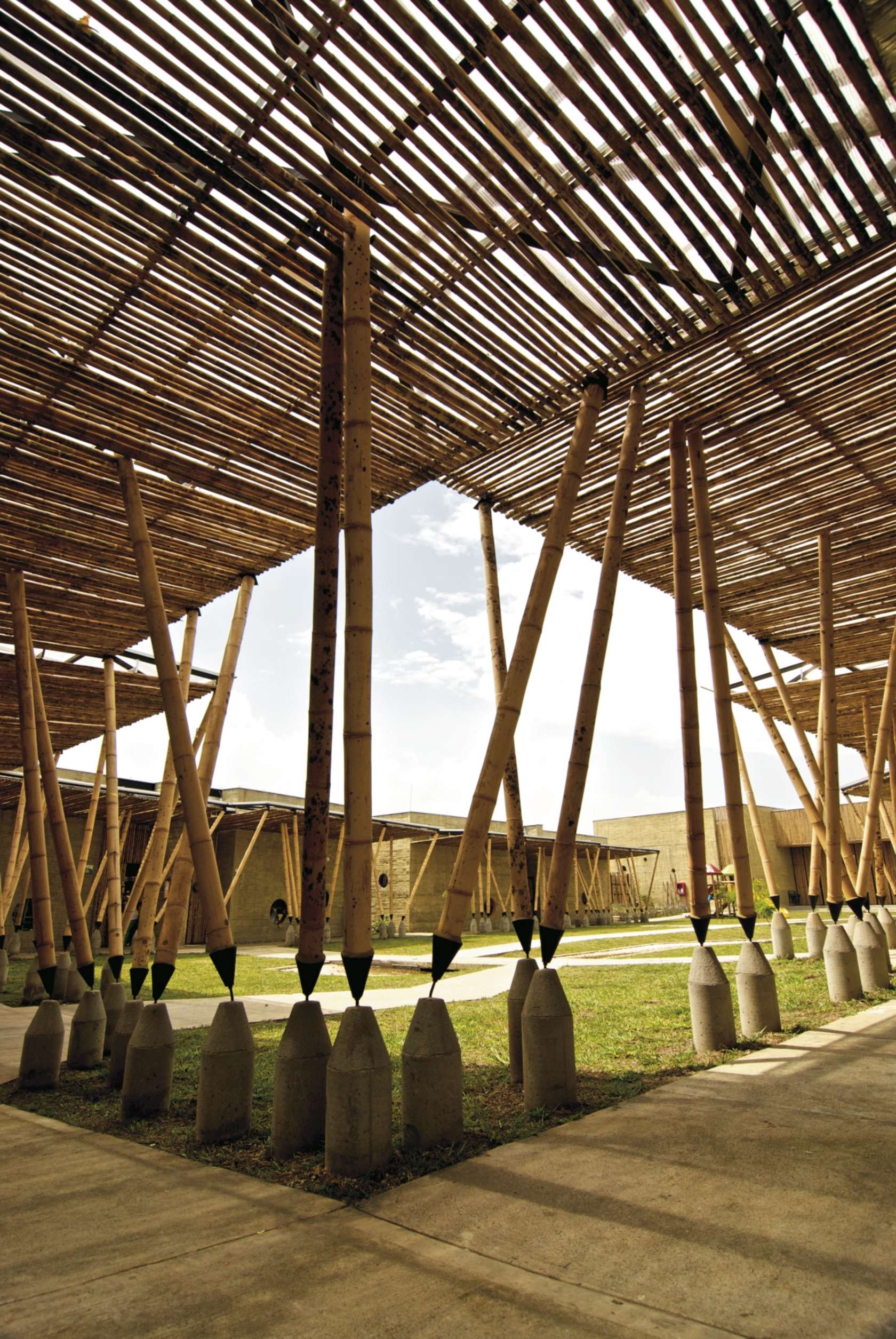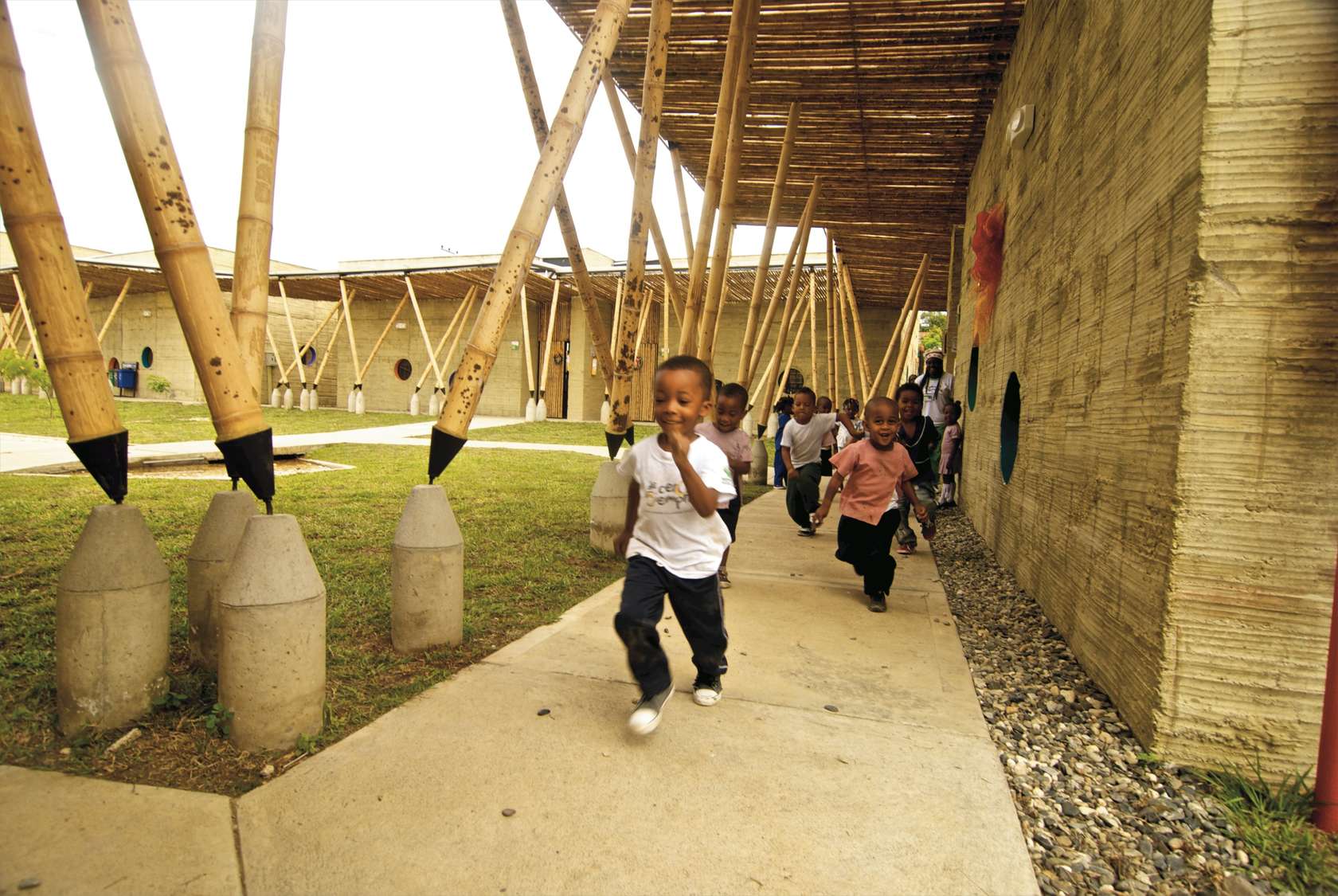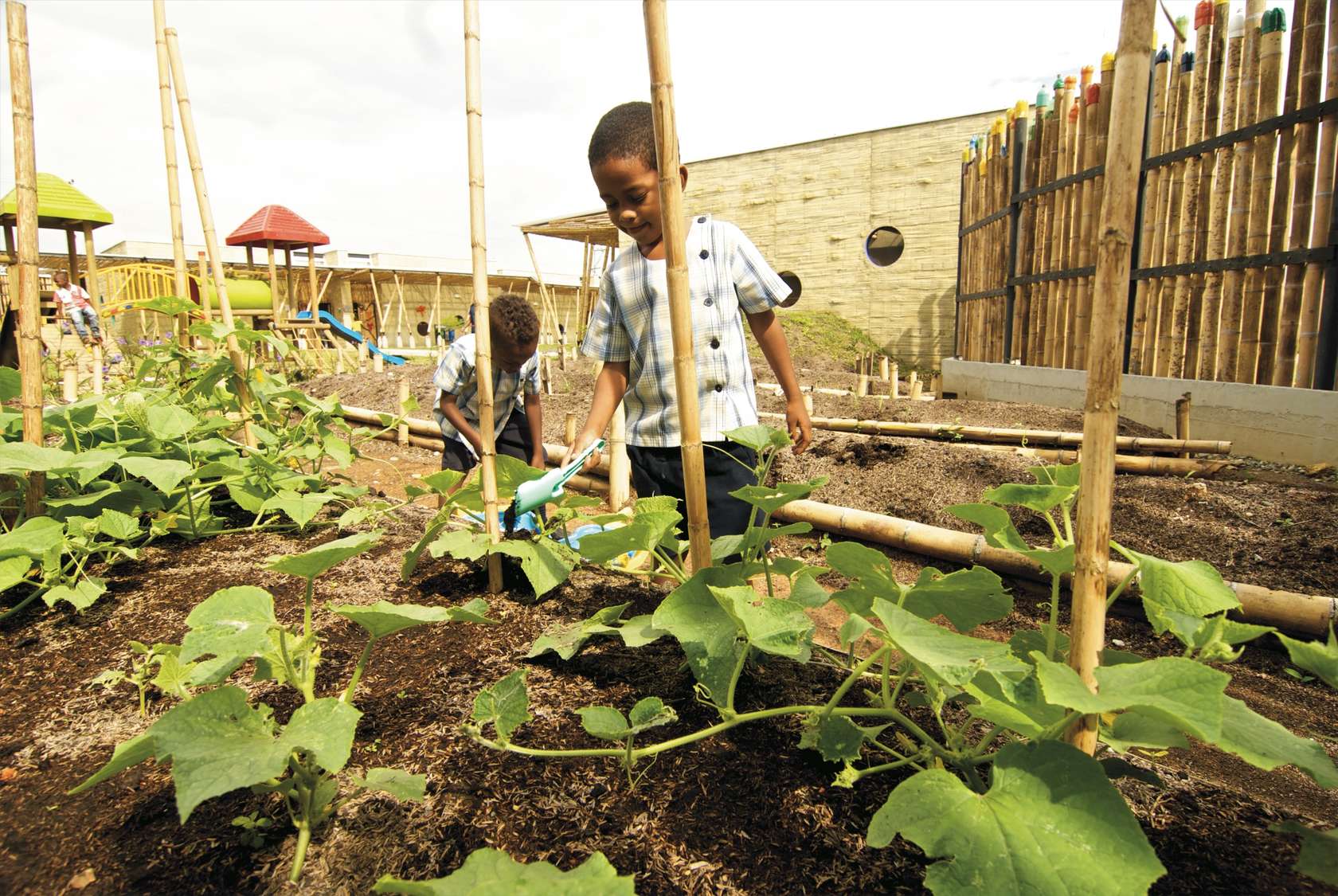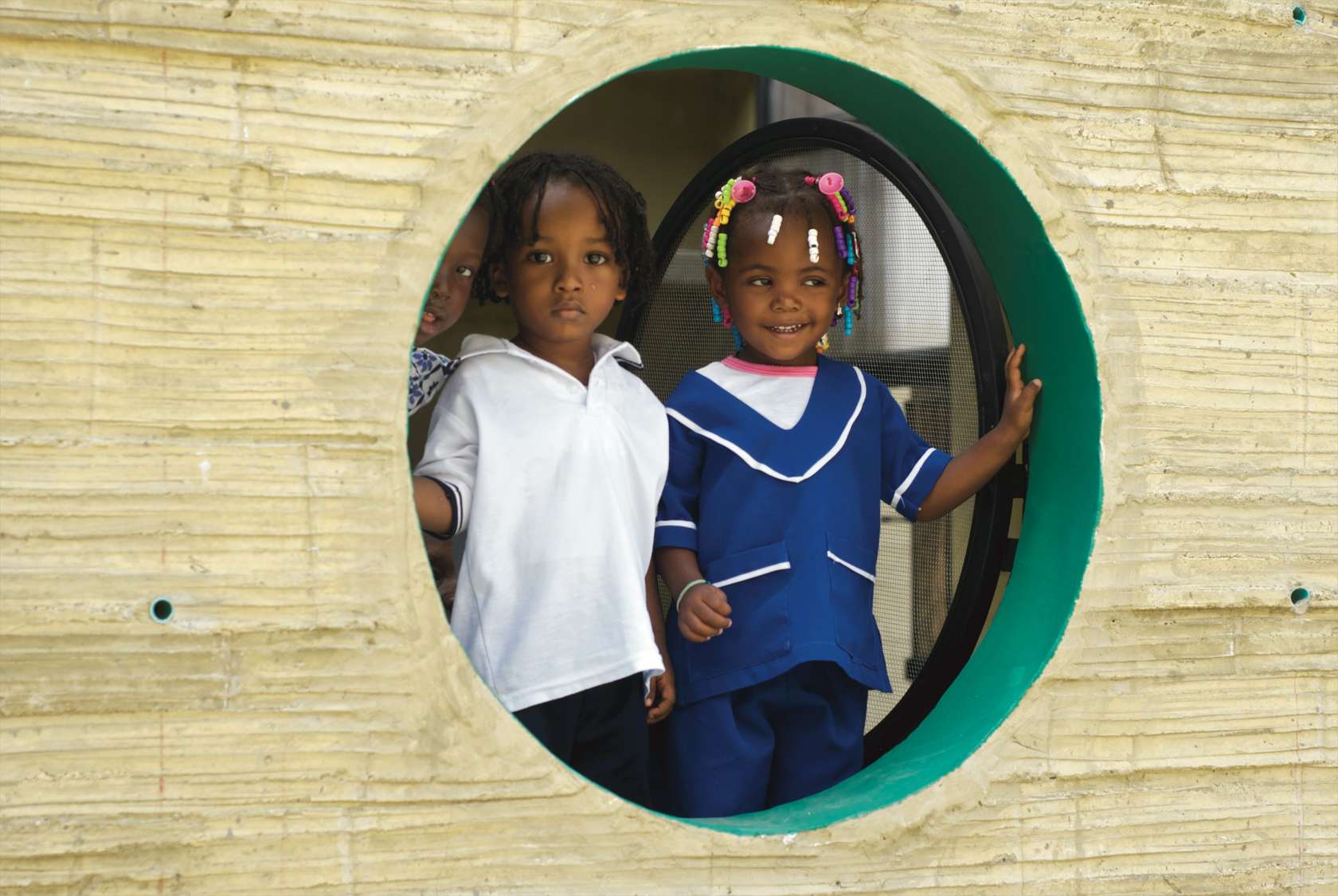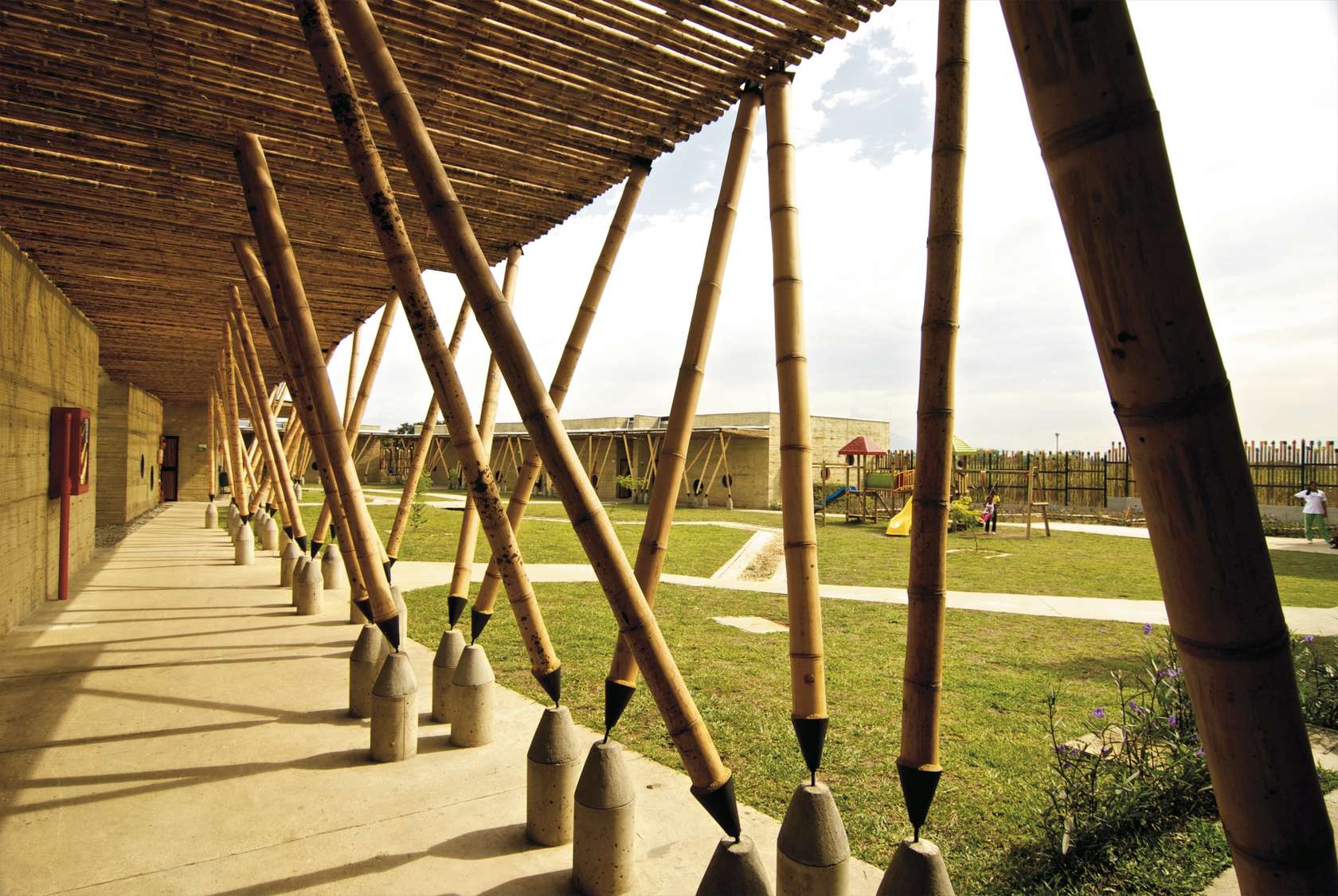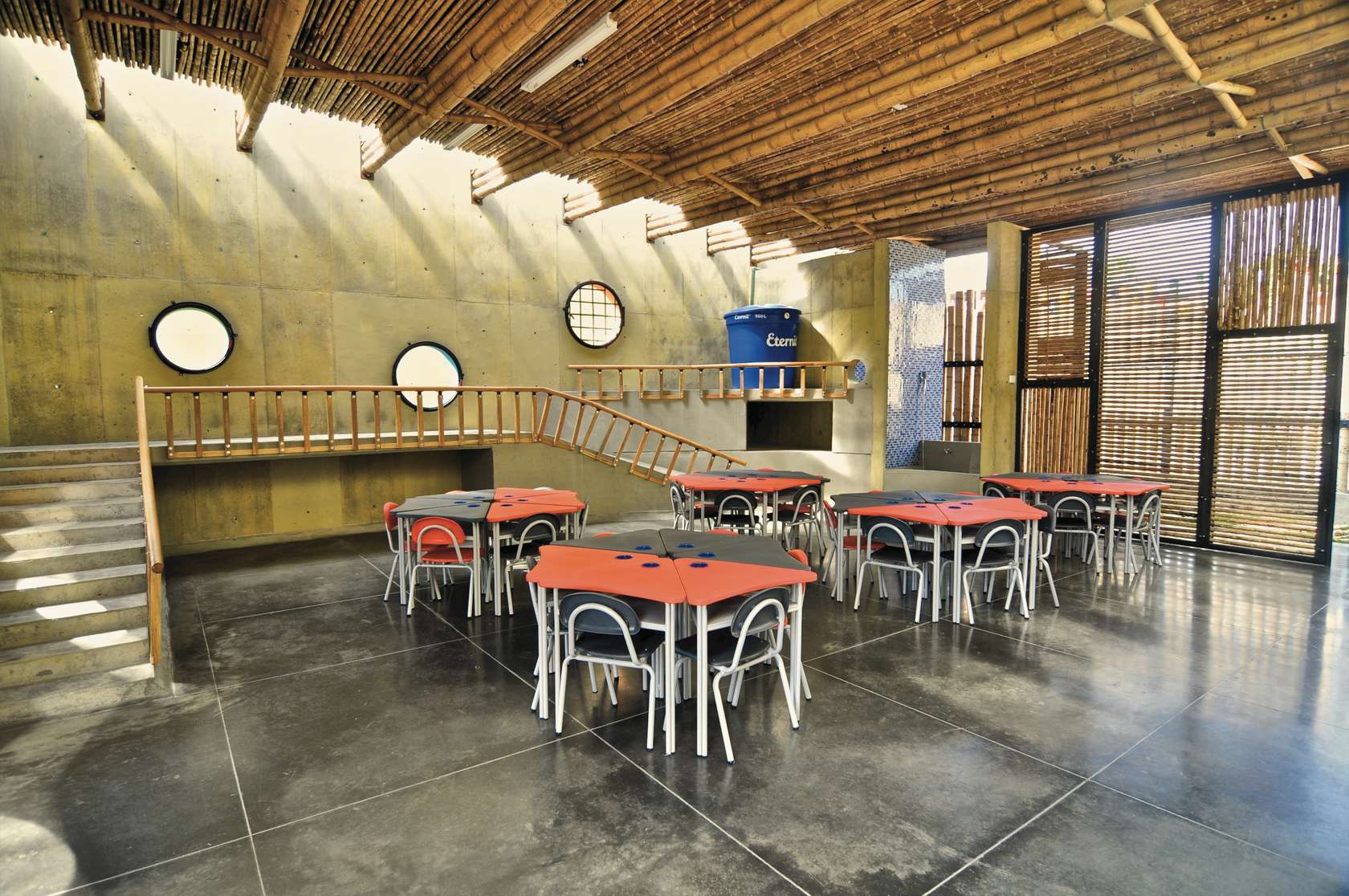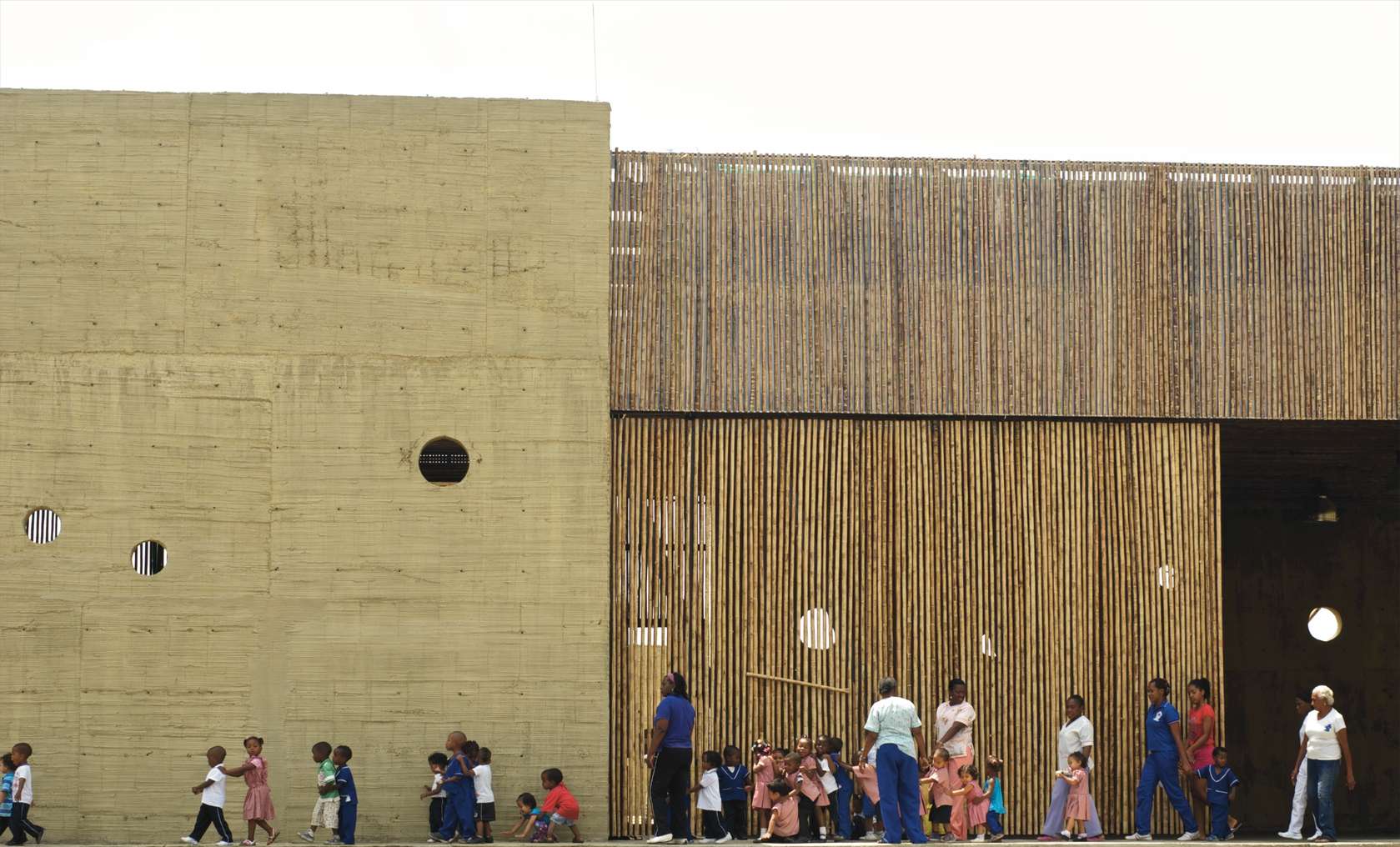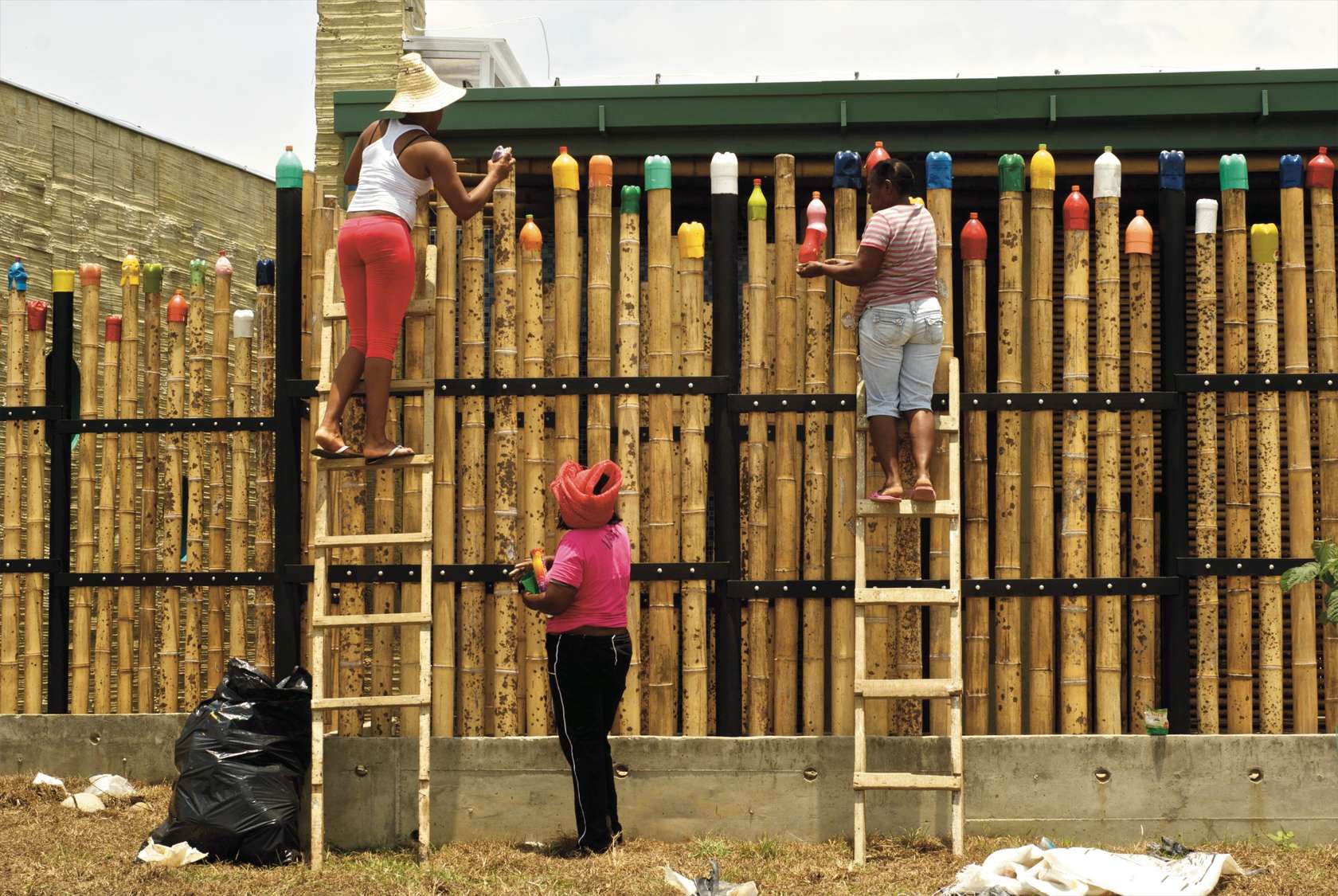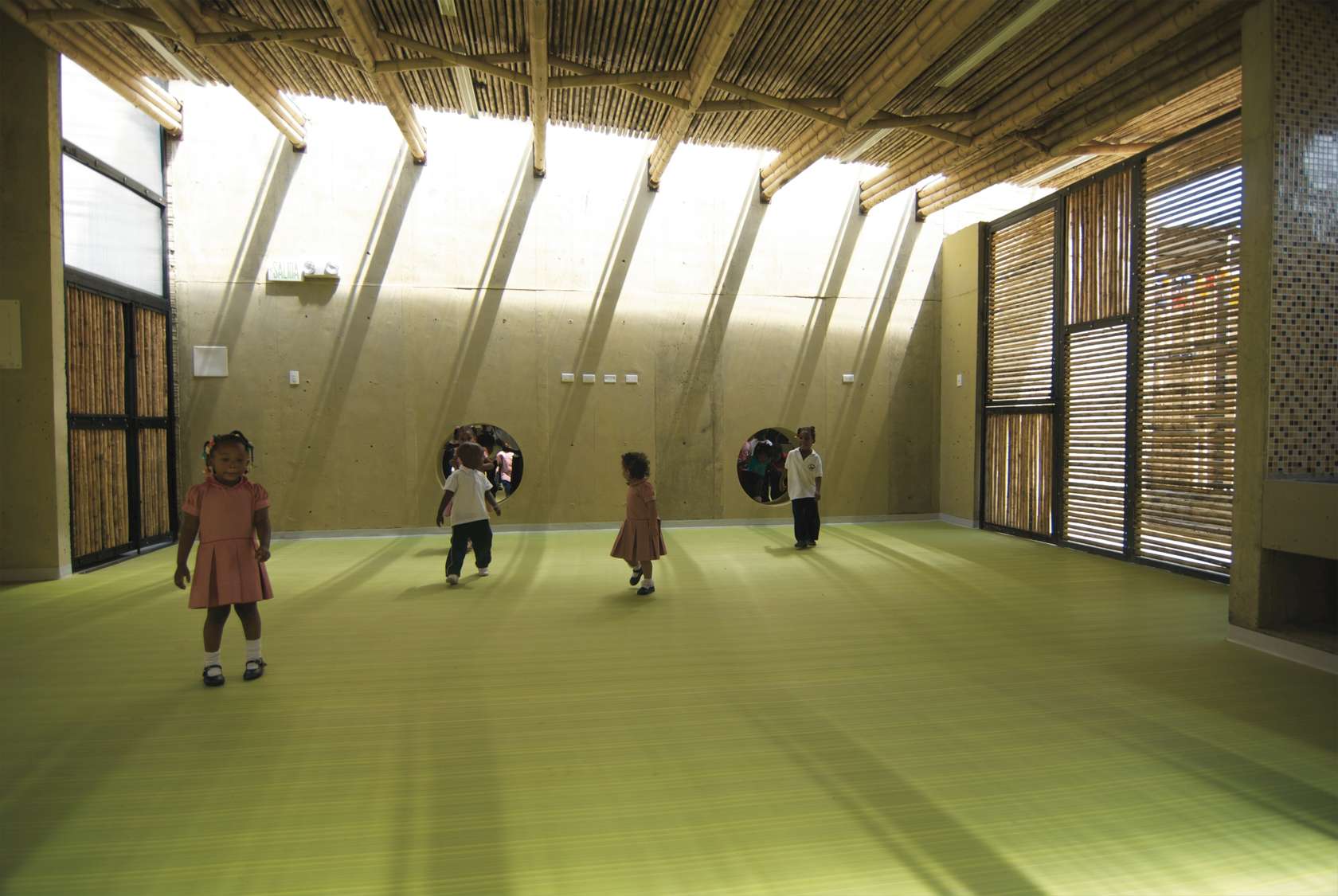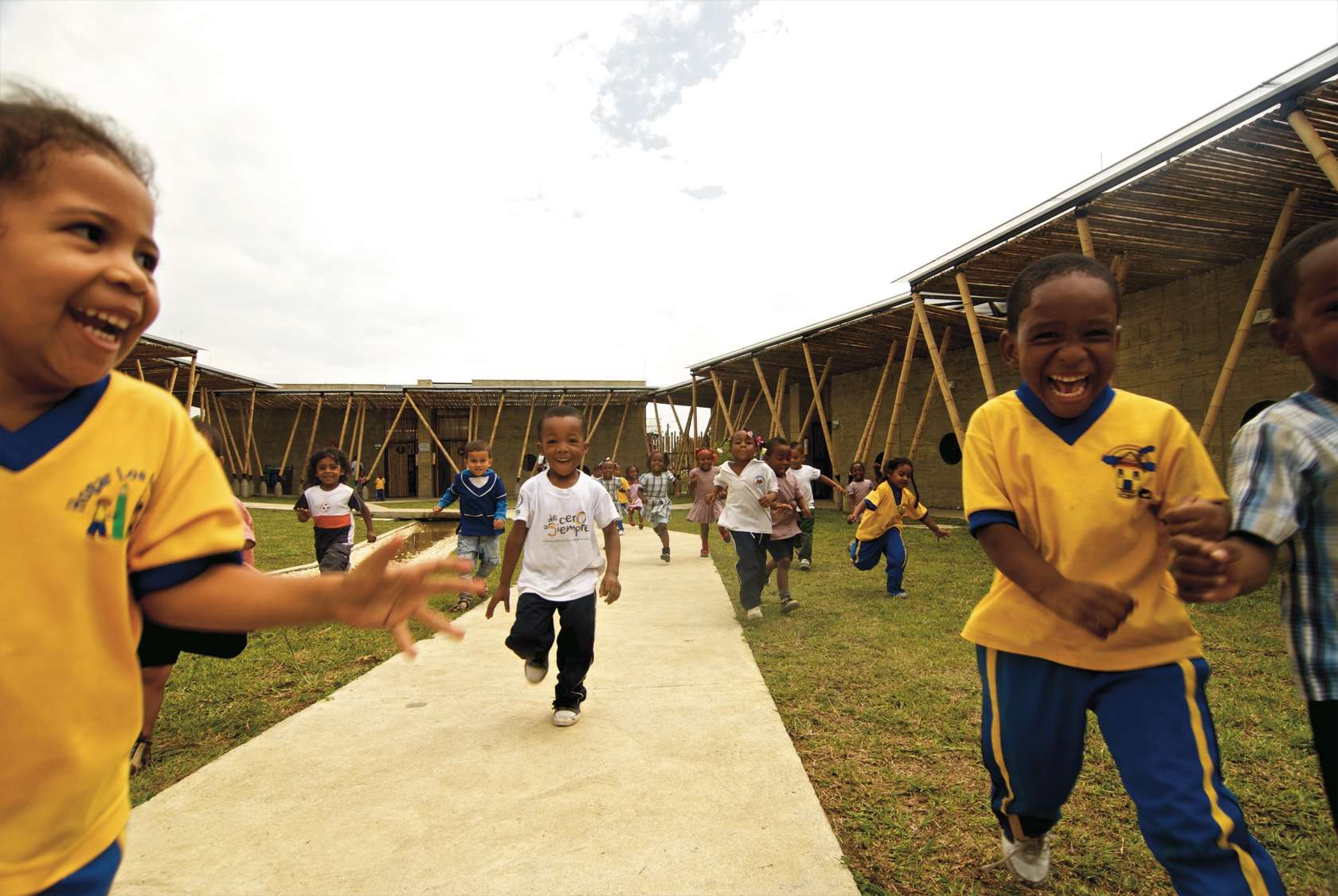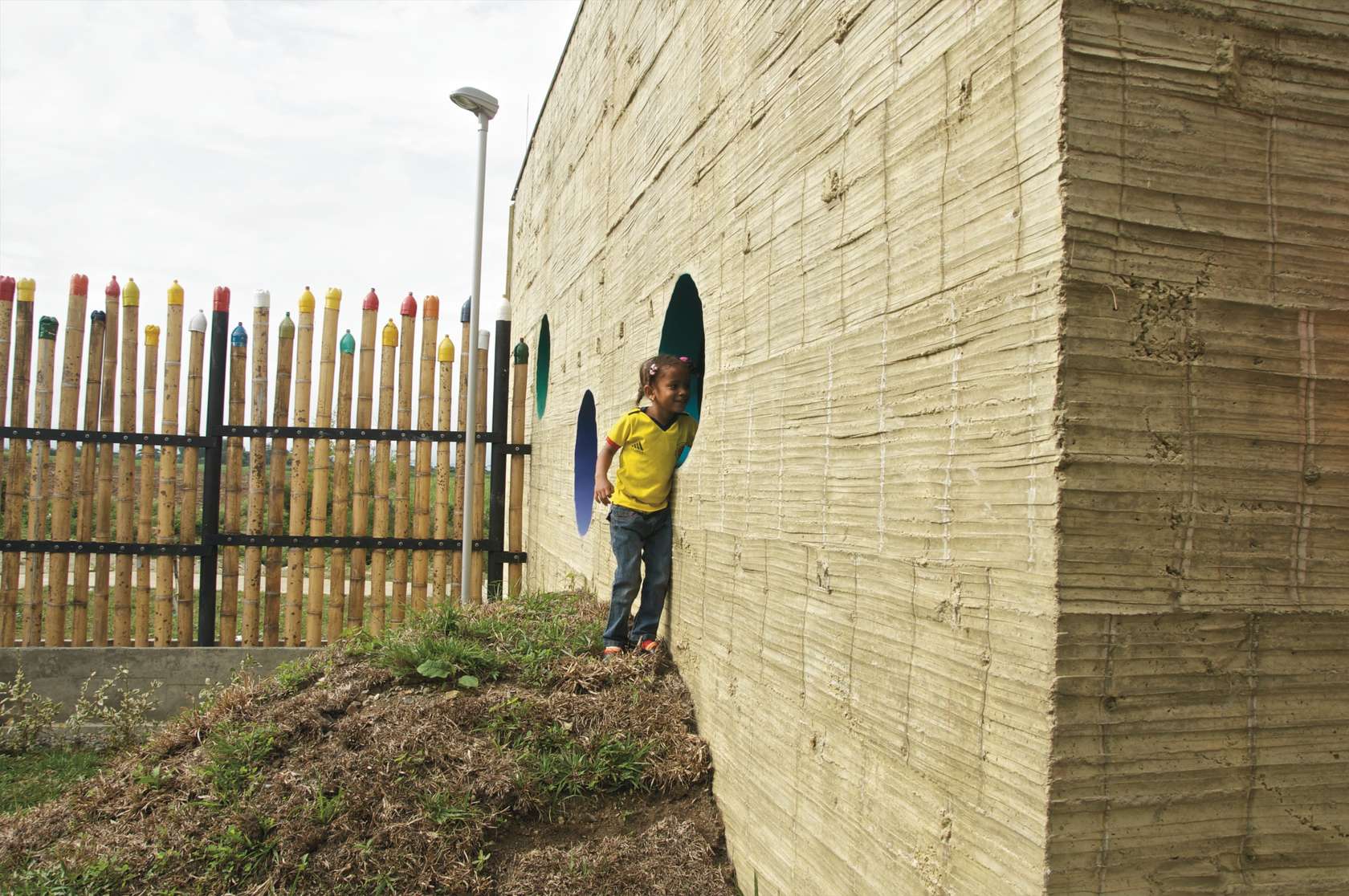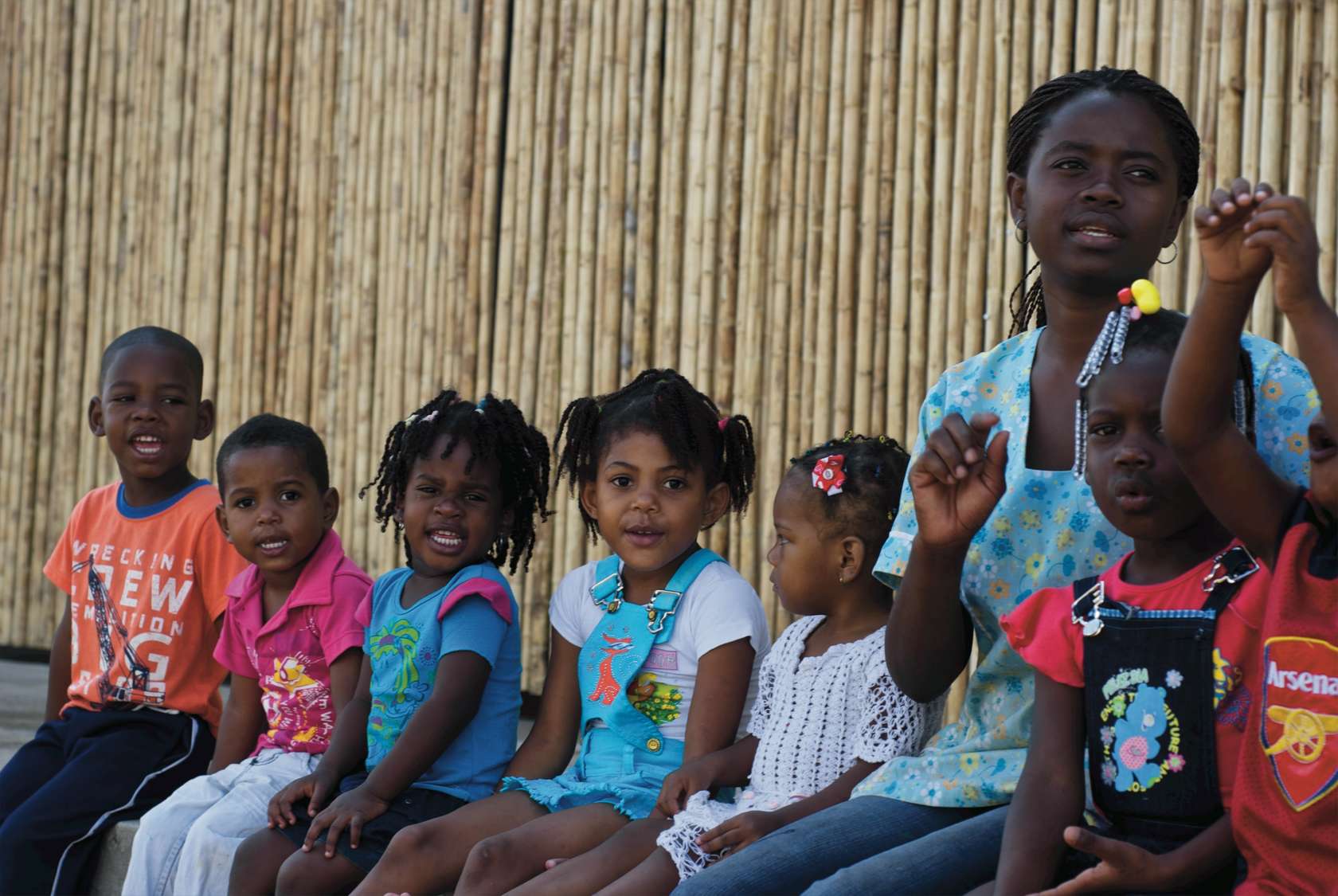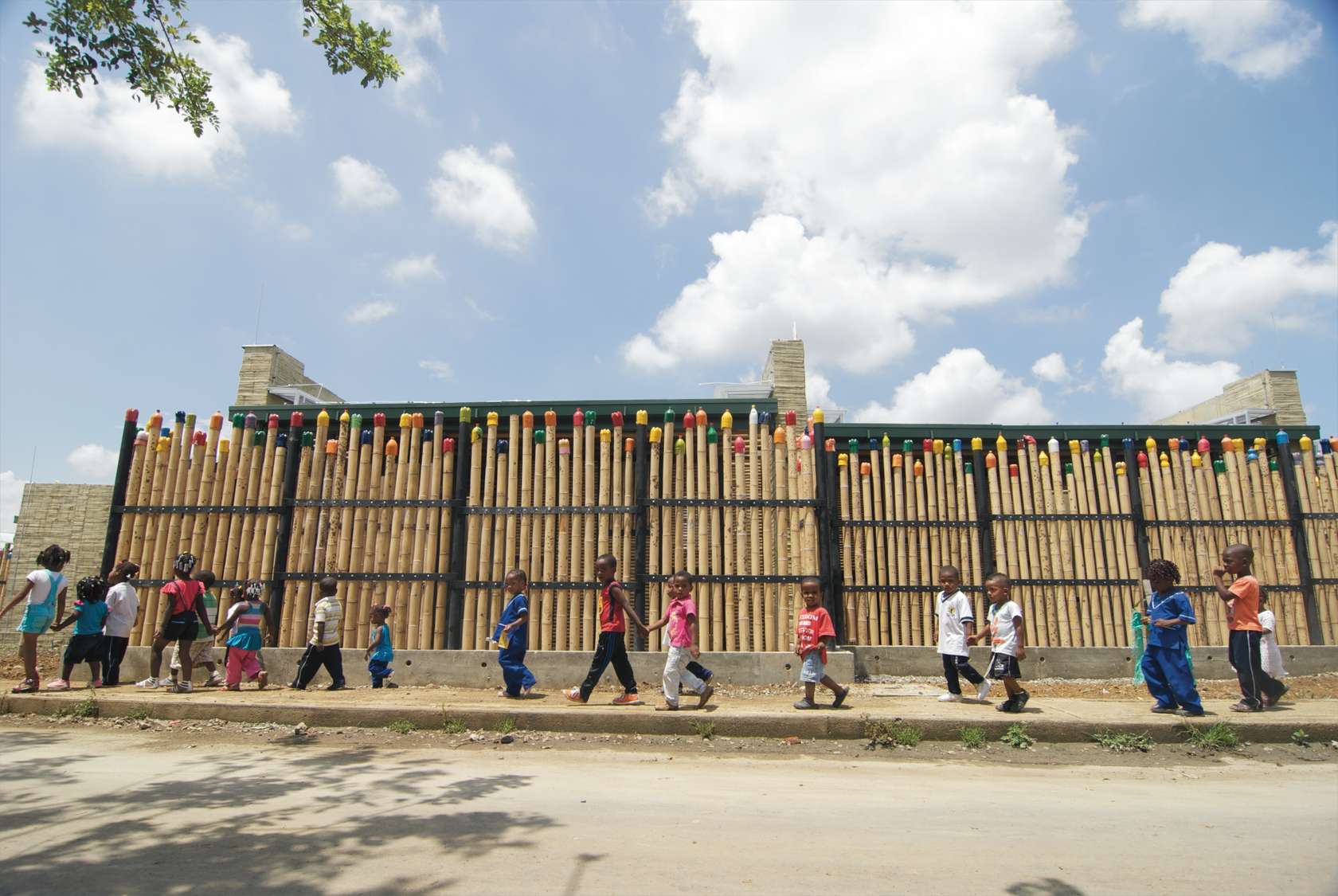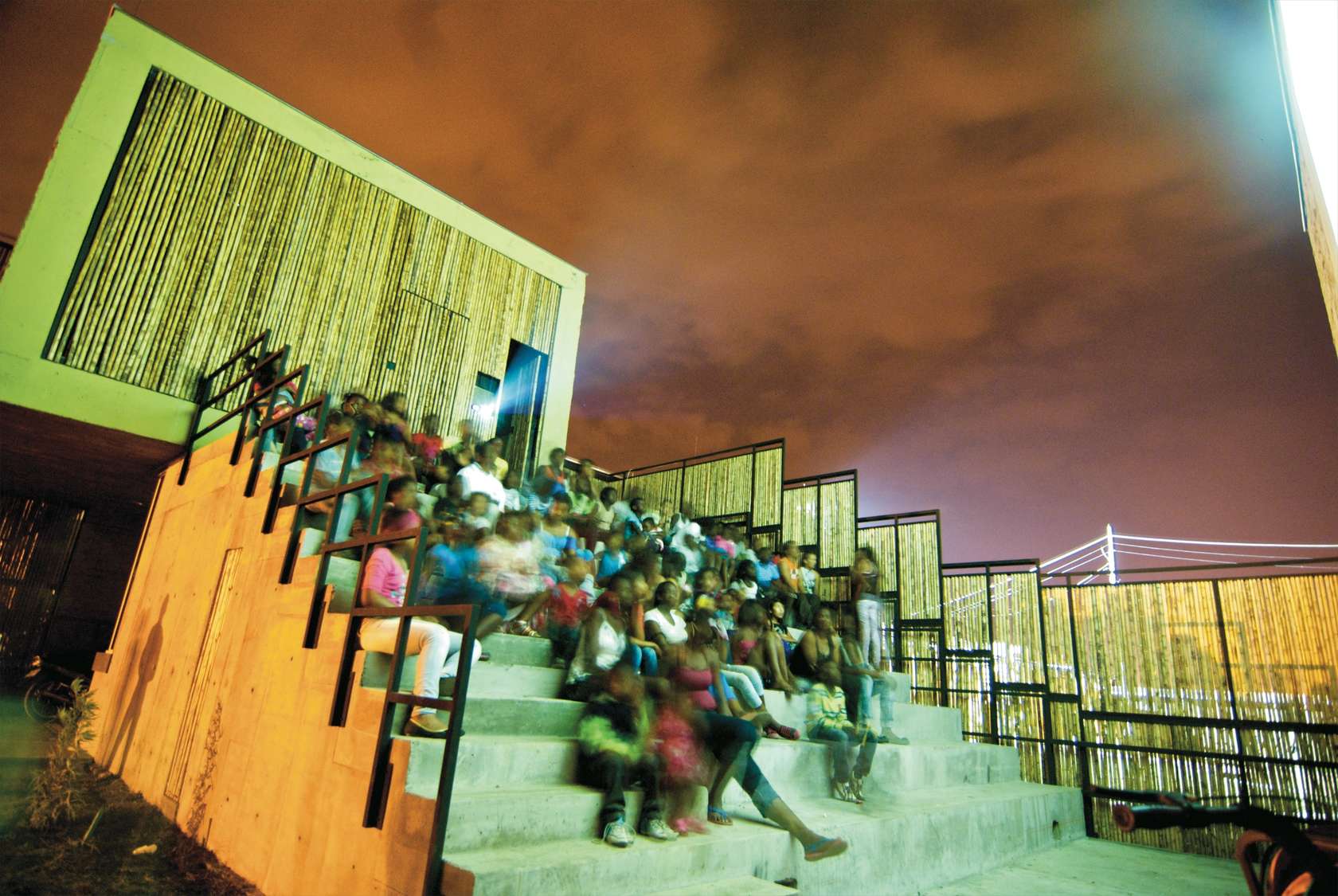The El Guadual Early Childhood Development Center in Villarrica, Villa Rica, Colombia is the brainchild of Plan Padrino, a program to support the National Strategy of the Colombian Presidential Council for Early Childhood Development.
Designed by the collaborative efforts of two Bogota based architectural practices, Daniel Joseph Feldman Mowerman and Iván Dario Quiñones Sanchez, the Center is complex of small to mid-sized structures constructed using local materials most prominently, Bamboo to create something unique and special on a fairly modest budget.
Here’s an official description,
[dropcap size=big]C[/dropcap]omposed of 10 classrooms, dining hall, indoor and outdoor recreation, semi-private arts spaces, first aid room, administration, vegetable garden, water feature, public outdoor theater, and a civic plaza, El Guadual Early Youth Development Center in Villa Rica, Cauca provides food, education, and recreation services to 300 kids 0-5 years old, 100 pregnant mothers, and 200 newborns as part of the national integral early youth attention strategy “de Cero a Siempre”.
DRAWINGS COURTESY ARCHDAILY
The Center’s inauguration in October 2013, marked the end of a three year long participatory design and construction effort that has strived to generate pride and ownership since the beginning of the process. Design charades with local kids, teenagers, early youth workers, and leaders were the starting point of the design in terms of spaces, materials, dimensions, and relations with the city.
The construction lasted 9 months and the total cost of the project was US$1.6 Million. The funds to build the project came form international cooperation, private donations, public resources, and in kind donations. During the construction process more than 60 local builders were employed and certified in construction techniques. Additional to the construction jobs, 30 local women were trained in early youth educator before being certified and hired to become the daily workforce of the center.
El Guadual has generated a notable urban impact for it offers generous sidewalks and landscape to the public, an open public outdoor movie theater, a semi-private arts and performing room open to the community at night and weekends, and a civic square. The wide array of public amenities has made of El Guadual a new pole of activity within Villa Rica.
The 10 classrooms designed following the Reggio Emilia pedagogic system offer open spaces, obstacles, and multiple variables to navigate the center making the process of discovering the center itself both a challenge and a game making education a recreational experience. Numerous entrances and exits connecting paired up classrooms through mountains, bridges, stairs, and slides foster an environment of decision taking and individual development through architecture. Each classroom has its own bathroom allowing kids to use it whenever they feel like it, not when the teacher can take them allowing educators to focus on the pedagogical activities.
The project is an example of low tech environmental construction. It is responsible with the environment inn terms of the materials it use, the water and energy it consumes, and the durability of the materials. The spaces all receive natural light throughout the days and are ventilated naturally allowing the center to work without the need of energy. The textured concrete walls absorb heat keeping the spaces cool, and the multi-layered roof controls the impact of the sun inside the rooms.
The use of bamboo as a way of re-valuing local traditions in a contemporary way speaks of the need to use local materials as well as preserve the riverbeds. Each classroom collects rain water that is used for gardening and maintenance, but makes the process of collection and utilization evident for the kids and visitors. The central water feature recirculates the water it uses and allows kids to interact with water as a recreational element.
The textured walls were made using local techniques of split bamboo form work. The fence capped with recycled bottles were collected and installed by the educators who now take care of the kids in the center.
Finally, El Guadual is slowly transforming a new city center where education, arts, and multi-generational gatherings are taking place making the care of the municipalities early youth a communal responsibility.



